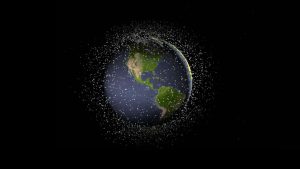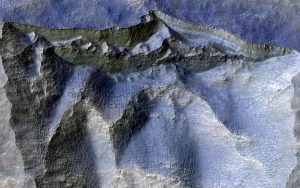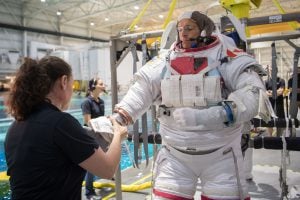
Environment
Earth’s orbit has become a cosmic landfill
Michel Doyon, manager of flight and systems operations at the Canadian Space Agency, walks us through what space debris is and its impact on Canada
- 1676 words
- 7 minutes
This article is over 5 years old and may contain outdated information.
Science & Tech

Solar activity — the source of the northern lights — is expected to hit an 11-year peak in 2013. While photographers and sky-gazers across Canada catch the stunning light shows with their heads tilted toward the sky, NASA is capturing images of auroras from a different angle: space.
NASA caught a solar eruption on video in late December. Captured by NASA’s Solar Dynamics Observatory, the video shows plasma majestically ejecting from the sun over a four-hour period. Though this was a minor event, the plasma extended a distance of nearly 260,000 kilometres from the sun — a distance about 20 times the diameter of Earth.


When charged particles from eruptions on the sun reach Earth’s atmosphere, green and red flashes of light appear across the sky beneath the auroral oval. Astronauts onboard the International Space Station (ISS) get a unique view of the auroras — from the side. Last January, the ISS crew members photographed a very active aurora borealis above Manitoba.
Earth isn’t the only planet in our solar system to have auroras. Astronomers have observed auroral ovals on Saturn and Jupiter. In 2009, the Hubble Space Telescope caught an image of auroras on both of Saturn’s poles. Saturn’s northern auroral oval is slightly smaller and more intense than the planet’s southern one. From this, astronomers have deduced that Saturn’s magnetic field is not evenly distributed across the planet.
Cassini, a NASA spacecraft launched 15 years ago, recorded Saturn’s northern aurora over four days in 2009. The images provided the first visible-light video of Saturn’s auroras. Originally black and white, scientists added orange to the film to make the moving light stand out against the backdrop. The colour of Saturn’s auroras remains a mystery.
Are you passionate about Canadian geography?
You can support Canadian Geographic in 3 ways:

Environment
Michel Doyon, manager of flight and systems operations at the Canadian Space Agency, walks us through what space debris is and its impact on Canada

Science & Tech
The mining industry is actively looking towards new frontiers in mining

Exploration
A conversation with Canadian astronaut David Saint-Jacques, who is getting ready to travel to the International Space Station

Exploration
The men and women that have become part of Canada’s space team